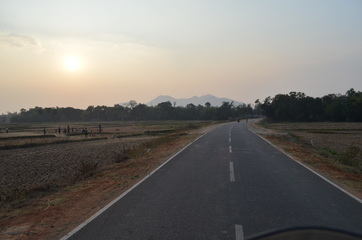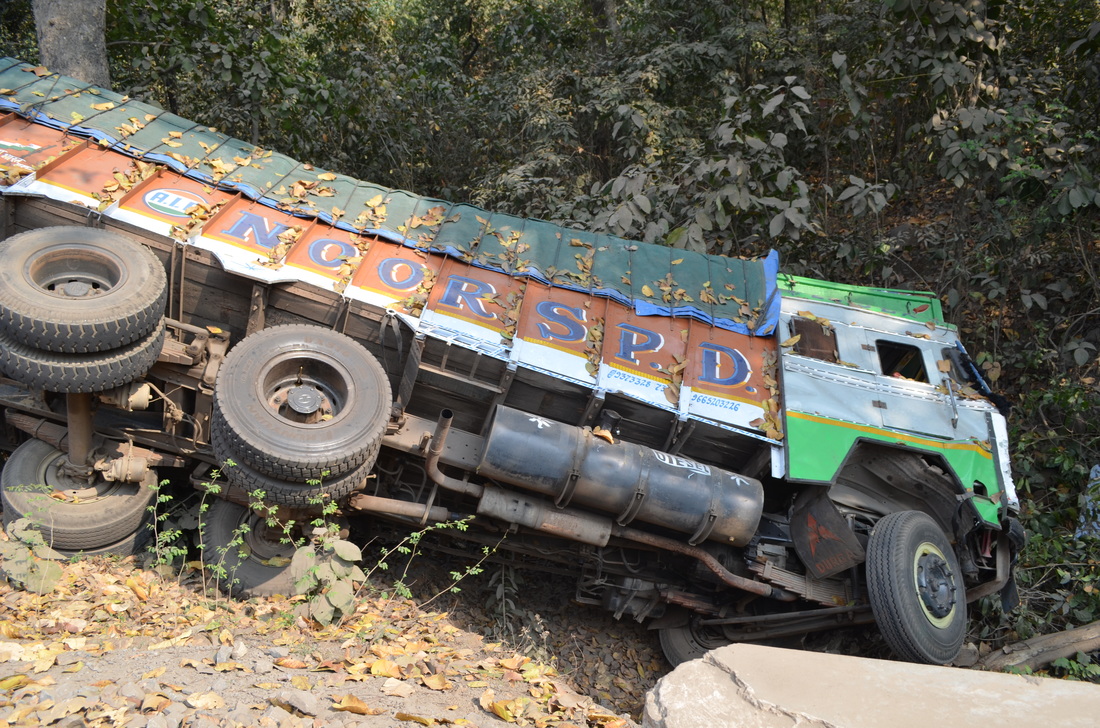Somewhere North of Gopalpur beach (a not-particularly-remarkable resort which reminds me of shabby Clacton in the 1980s) we go hunting for “Turtle beach”. The clue is in the name but just in case you’re wondering, it’s the section of coastline where the turtles land once a year to lay their eggs, and apparently now is the right time of year. We try asking locals and get a variety of answers none of which are in any way fruitful for finding any landfall turtles. I’m ready to give up but we make one more foray off-road down some sand tracks towards the sea, it’s looking promising. When we arrive at the beach, parking our bikes on the top of the bluff, we find a different kind of beach landing from our expectation of scuttling turtles. The Indian Navy has chosen this beach to land on and have a beach party, complete with PA systems, huge mess tent, football and WAGs. As we saunter down the sand debating whether we’re going to get turfed-off we are approached by a few inquisitive Navy guys who decide that we must be hungry (they were right, we hadn’t eaten for hours) so they supply us with two brimming plates of food. You have never tasted a Chicken Biryani until you’ve tasted one from the Indian Navy chefs, I’m conscious of getting into hyperbole again, so suffice to say they know how to eat well, and they’re remarkably hospitable, we are given as much dinner, desert and drinks as we can take. Fresh fruit, sugared dumplings, salads, tomato salsa, and the Chicken Biryani had sultanas and pine nuts. Happy days.
The long expressway up the coast gets a bit tiresome after a thousand or so km so we decide to head inland to the smaller country roads and see if we can find the Satkosia gorge crocodile reserve. David refuses to pay the government levy of Rs1000 (£10) to get into the sanctuary so he rides across country to circumvent the border guards and their barrier. I come over all British and pay my fee, I don’t expect to see David again for a few hours, if not days, I have no idea which direction he’s gone, or where this road goes, but less than 5km into the sanctuary there’s David looking all smug having ridden across a few fields and along the side of a river to get back to the road. Bloody typical – oh well, it’s only a tenner, and the crocodiles probably need some financial support. At the next security barrier I lose a little bit of my British composure. I’ve just spent an Indian tea-picker’s daily wage getting into this crocodile reserve, driven about 5km (it’s about 50km across) and reach another barrier to be told that we can’t go any further! David ignores the security guard and squeezes his bike between two concrete posts at the side of the barrier but gets wedged and has to scrape his rear boxes through, my boxes are a couple of inches wider so I’m going nowhere. Normally in India you can cajole, discuss, assert, bribe or bully your way through most situations but this guard stood firm and point blank refused to open the gate despite my lengthy protestations! We give up with the idea of crocodiles and head further into the woodland on roads which don’t exist on any of our maps or Sat-navs. By “road” of course I mean dirt track / dried up stream. It’s fun to be bouncing the bikes around off-road again after so many hours munching miles on truck-infested highways although it does dawn on us that we are in the middle of nowhere on a tiny dirt track somewhere near a crocodile reserve, and I doubt if crocodiles obey the security road blocks either, best not stop or we may become lunch.
After a few hours of dirt tracks we find a road which the Sat-nav recognises, although being so far off any tourist trail or through-route of any description we are going to find it impossible to find a guest house. Well, saying that, we found one in a dirty village with no parking, no shower, no western toilet, no concept of cleanliness and no idea what life forms had made their nest in the bedding. We abandoned the idea of a room and went hunting for an appropriate camping spot. Bear in mind, we have just ridden for hours on tracks through forests and countryside, we are at least 50km from the nearest town, we’ve only seen occasional rural villages all afternoon. So when we snuck down a walking trail off the small country road, hidden from view by trees and rocks we hope we’ve found somewhere unobtrusive to set up camp. Don’t kid yourself; India is probably the most overpopulated place on the planet, you just cannot get away from people. Even in our hidden little campsite, shielded from view we were found and observed, not once, not twice but three times in less than 12 hours. First the local men at about 9pm, I can’t imagine what they’re doing out here, we’re in the scrubland not a farm field, but hey, they come with torches and peer inquisitively at our alien looks, our space-ship bikes, my magic hammock suspended from two trees and David’s not particularly magic mattress. Then at 6am we are discovered by a group of farm-labourer women who wake us with their twittering as they loudly discuss the alien landing. And finally, just as we’re packing up, a bunch of boys arrive, just to reiterate, we are in the middle of nowhere, so God only knows where they’ve come from, but they actually sit down to watch the proceedings as we decamp onto the back of our two landing crafts and ship out. I can see how it must be a spectacle to see two Europeans on big bikes but it’s still a bit unnerving being observed like monkeys in a zoo, maybe we should charge an entrance fee.
Two days later, after tolerating the sort of squalid guest house that one hopes to forget but find it’s indelibly etched on your memory, we arrive in Calcutta (Kolkata as it’s now known). The black hole of Calcutta (a prisoner of war camp where British soldiers were kept / killed by the Bengal army in the 18th century) seems like a good bet after the state of the toilets we have endured over the last 48 hours. The cockroaches and ants were king of the castle if you dared to get on the throne in the enticingly, but totally misleadingly, named Hotel Jasmine in Barkote. What a shit-hole, literally! There were several other holes to avoid on the way to Kolkata. Our favourite was the Hotel Paras restaurant which proudly served both “vag and non-vag” in its “famely restrunt”. But the biggest holes are in the remarkable National Highway 6, one of the main arterial routes into the biggest city in North East India, stretching East-West across India all the way from Mumbai. NH6 turns into a demolition-derby of trucks with smashed steering, collapsed suspensions and snapped axles. You cannot imagine the size and depth of the potholes and ruts where the road had just disintegrated into craters which consumed our bikes in clouds of dust as we fell through the Earth’s crust. The very idea of driving a fully loaded truck along it would be unthinkable anywhere but here, where the crazy drivers are game for anything. There were more than a dozen stranded HGVs in a 20km stretch. It looked like a comedy of truck carnage with wheels falling off and axles detaching themselves from their chassis parts. The drivers clearly expect their suspension to collapse, they just jack the truck up on logs and tyres and weld / hammer another pit of pig iron onto the axle mount. Safety is paramount out here!


 RSS Feed
RSS Feed
